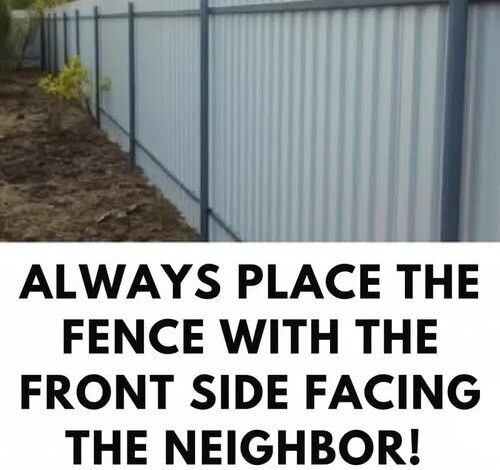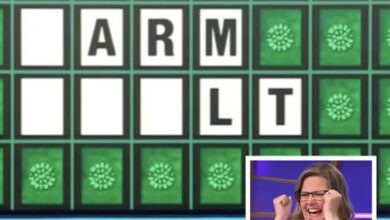
Always place your fence with the front facing your neighbor!
When most homeowners decide to build a fence, the first considerations are usually practical: defining property boundaries, creating privacy, keeping children and pets safe, and adding security. While these are essential reasons to install a fence, there’s one important detail that many overlook—the orientation of the fence itself. The “good” or finished side of the fence, the one that looks smooth and polished, should always face outward toward your neighbor or the street.
This may seem like a minor design choice, but it carries far more weight than you might expect. The way your fence is positioned can affect neighborly relationships, compliance with local laws, and even the overall value of your property. Understanding why the finished side matters will help you avoid costly mistakes and maintain harmony within your community.
Building Better Relationships With Neighbors
One of the most immediate benefits of placing the finished side of your fence outward is the message it sends to your neighbors. A fence naturally creates a boundary, but it doesn’t need to create conflict. When you show the polished, attractive side to your neighbor, it communicates that you respect their space and their view.
It’s a small act of courtesy that goes a long way. Neighbors who feel considered are more likely to respond with goodwill, trust, and cooperation. On the other hand, putting the unfinished side—with exposed rails and posts—toward your neighbor can come across as careless or inconsiderate. This can lead to unnecessary tension or resentment that may escalate into long-term disputes. Maintaining a positive relationship with your neighbors is invaluable, and something as simple as fence orientation can play a surprisingly big role in achieving that.
Legal and Regulatory Requirements
Beyond courtesy, many municipalities and homeowner associations have specific rules regarding fence orientation. In some regions, building codes clearly state that the finished side of the fence must face outward. These rules are in place to maintain community aesthetics and prevent disagreements between neighbors.
Ignoring these regulations can be costly. A neighbor who feels slighted may file a complaint, which could lead to inspections, fines, or even orders to alter or completely rebuild the fence. Taking the time to research local codes before construction ensures that you avoid unnecessary legal trouble and expenses. By following regulations, you keep your project compliant and prevent headaches later on.
Enhancing Curb Appeal and Property Value
A well-constructed fence does more than separate your yard from your neighbor’s. It also contributes significantly to your home’s curb appeal. The exterior of your property is the first thing visitors, neighbors, and potential buyers notice. A neat, polished fence facing outward presents your home in the best possible light.
Conversely, leaving the unfinished structural side visible can make your property look neglected or incomplete. This not only diminishes aesthetic appeal but can also impact your home’s value. Buyers may interpret an inward-facing finished side as a sign of disregard for community standards. By presenting the best face of your fence outward, you create a welcoming, attractive property that reflects pride of ownership.
A Universal Standard of Respect
Positioning the finished side of the fence outward is not just an American standard—it’s recognized worldwide. Across different cultures and regions, the principle remains the same: give your neighbors the view of the polished side. This universal practice reflects a shared value of respect for those around us.
By placing the finished side outward, you show empathy, consideration, and thoughtfulness. It’s a subtle but meaningful way of strengthening community bonds, encouraging cooperation, and reinforcing the idea that property ownership comes with social responsibility.
Practical Tips for a Smooth Fence Project
To make your fencing project successful and stress-free, consider these important steps:
1. Research local codes and HOA rules. Before construction begins, check building codes and neighborhood guidelines. Many communities have clear requirements regarding height, style, and orientation.
2. Communicate with your neighbors. Let your neighbors know your plans before building. Open communication allows them to voice concerns and avoids misunderstandings. Sharing your intentions demonstrates respect and builds trust.
3. Consider a “good neighbor” fence design. Double-sided fences, which look identical on both sides, are an excellent solution. While slightly more expensive, they eliminate disputes over which side should face outward and create a balanced, attractive look for both parties.
4. Prioritize quality materials and design. A fence isn’t just a boundary; it’s an investment. Choose durable, weather-resistant materials that will last. Well-built fences require less maintenance and retain their appearance longer.
5. Commit to regular maintenance. No matter how well the fence is built, it needs upkeep. Stain or paint the wood to protect it, repair damages promptly, and keep the fence clean. A maintained fence looks attractive and prevents small issues from becoming costly repairs.
The Bigger Picture: Fences as Symbols
It’s worth remembering that fences do more than provide function—they symbolize boundaries, relationships, and cooperation. How you build your fence reflects your approach to living within a community. By giving your neighbor the finished side, you demonstrate that you understand the balance between private ownership and shared living spaces.
A fence can either divide neighbors or become a silent acknowledgment of mutual respect. Choosing to face the polished side outward is a choice that strengthens goodwill and prevents conflict before it starts.
Final Thoughts
While fences primarily serve functional purposes like security and privacy, their orientation plays a surprisingly powerful role in shaping relationships, meeting legal requirements, and maintaining property value. Facing the finished side outward is more than just a design choice—it’s a practice rooted in courtesy, respect, and responsibility.
By approaching your fence project with thoughtfulness, clear communication, and compliance with regulations, you create more than just a barrier. You contribute to a neighborhood built on cooperation and trust. In the end, a well-placed fence doesn’t just protect your home—it enhances your community, reinforces goodwill, and reflects pride in your property.
So the next time you consider installing or replacing a fence, remember this simple but important rule: always place the finished side toward your neighbor. It’s a small gesture with lasting benefits for harmony, aesthetics, and peace of mind.




